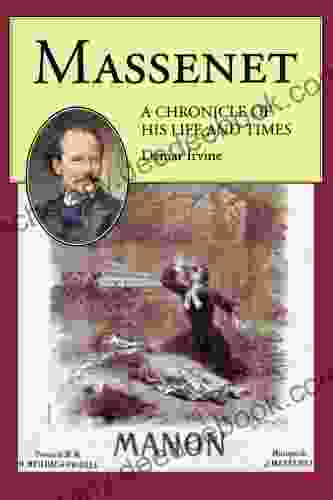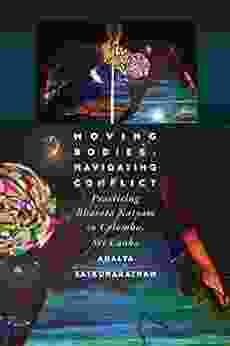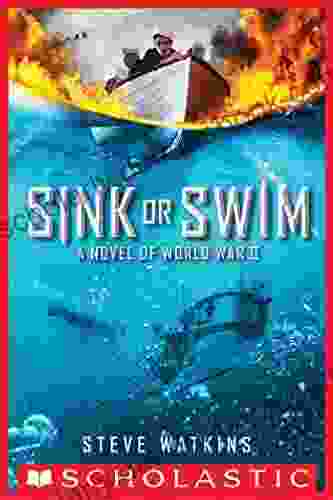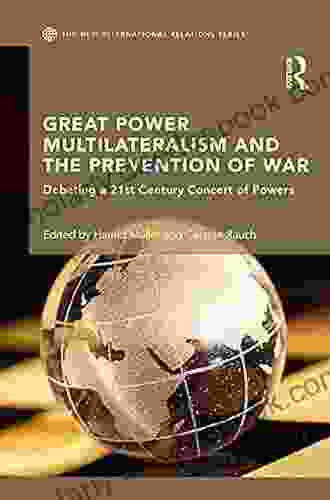Moving Bodies Navigating Conflict: The Role of Embodiment in Conflict Resolution

Conflict is a natural part of human interaction. It can arise from a variety of sources, such as differences in values, beliefs, or interests. While conflict can be destructive, it can also be an opportunity for growth and learning. If conflict is managed effectively, it can lead to new insights, strengthened relationships, and creative solutions.
One of the most important factors in conflict resolution is embodiment. Embodiment refers to the way in which we experience the world through our bodies. It includes our physical sensations, emotions, and movements. Embodiment is not something that is separate from our minds; rather, it is an integral part of who we are.
When we are in conflict, our bodies often react in ways that are beyond our conscious control. We may feel our hearts racing, our muscles tensing up, or our faces flushing. These physical reactions can be a source of distress, but they can also be a valuable source of information. By paying attention to our bodies, we can learn more about our own needs and feelings, as well as the needs and feelings of others.
5 out of 5
| Language | : | English |
| File size | : | 4347 KB |
| Text-to-Speech | : | Enabled |
| Screen Reader | : | Supported |
| Enhanced typesetting | : | Enabled |
| Print length | : | 200 pages |
In addition to providing information, our bodies can also be a powerful tool for navigating and resolving conflict. By moving our bodies in certain ways, we can create a more positive and productive environment for dialogue. For example, research has shown that simply making eye contact with someone can help to build trust and rapport. Similarly, using open body language, such as uncrossed arms and legs, can make others feel more comfortable and open to listening.
Of course, there are times when using our bodies to navigate conflict can be challenging. If we are feeling angry or upset, it may be difficult to control our physical reactions. In these situations, it is important to find ways to manage our emotions so that we can respond to conflict in a constructive way.
There are a number of different techniques that can be used to manage emotions and move our bodies in a more positive and productive way. These techniques include:
- Deep breathing: Deep breathing can help to calm our nervous system and reduce stress. When we are feeling overwhelmed, taking a few deep breaths can help us to regain our composure and focus on the present moment.
- Mindfulness: Mindfulness is the practice of paying attention to the present moment without judgment. By practicing mindfulness, we can learn to be more aware of our thoughts, feelings, and bodily sensations. This awareness can help us to better manage our emotions and respond to conflict in a more skillful way.
- Yoga: Yoga is a mind-body practice that combines physical postures, breathing exercises, and meditation. Yoga can help to improve our flexibility, strength, and balance. It can also help to reduce stress and improve our mood.
- Tai chi: Tai chi is a gentle mind-body practice that involves slow, flowing movements. Tai chi can help to improve our balance, coordination, and flexibility. It can also help to reduce stress and improve our mood.
These are just a few of the many techniques that can be used to manage emotions and move our bodies in a more positive and productive way. By incorporating these techniques into our lives, we can better navigate conflict and create a more peaceful and harmonious world.
There are a number of different ways in which moving bodies can help to resolve conflict. These include:
- Creating a more positive and productive environment for dialogue: When we move our bodies in a positive and respectful way, we create a more positive and productive environment for dialogue. For example, making eye contact, using open body language, and maintaining a relaxed posture can all help to put others at ease and make them more receptive to listening.
- Releasing pent-up emotions: Conflict can lead to a build-up of pent-up emotions, such as anger, frustration, and resentment. These emotions can make it difficult to think clearly and communicate effectively. By moving our bodies in a way that releases these emotions, we can create a more positive and productive space for dialogue.
- Building trust and rapport: Moving our bodies in a way that is congruent with our words can help to build trust and rapport with others. For example, if we are saying that we are open to listening, our body language should reflect this. By being congruent in our words and actions, we can create a more positive and productive environment for dialogue.
- Promoting empathy and understanding: Moving our bodies in a way that is empathic and understanding can help to promote empathy and understanding between conflicting parties. For example, if we are listening to someone who is angry, we can use our body language to show that we are understanding and supportive. By being empathic and understanding, we can create a more positive and productive space for dialogue.
There are a number of different examples of how moving bodies can be used to navigate conflict. These include:
- The use of dance to resolve conflict: Dance can be a powerful tool for resolving conflict because it allows people to express their emotions in a safe and non-verbal way. In some cultures, dance is even used as a form of therapy to help people to resolve their conflicts.
- The use of martial arts to resolve conflict: Martial arts can be a powerful tool for resolving conflict because it teaches people how to control their emotions and use their bodies in a constructive way. In some martial arts, students are even taught how to use their bodies to de-escalate conflict and avoid violence.
- The use of yoga to resolve conflict: Yoga can be a powerful tool for resolving conflict because it helps people to develop self-awareness and self-control. By practicing yoga, people can learn how to manage their emotions and respond to conflict in a more positive and productive way.
These are just a few of the many examples of how moving bodies can be used to navigate conflict. By incorporating these techniques into our lives, we can better navigate conflict and create a more peaceful and harmonious world.
Moving bodies can be a powerful tool for navigating and resolving conflict. By paying attention to our bodies and moving them in a positive and productive way, we can create a more positive and productive environment for dialogue. We can also release pent-up emotions, build trust and rapport, and promote empathy and understanding.
Incorporating techniques that help us to manage our emotions and move our bodies in a more positive and productive way can help us to better navigate conflict and create a more peaceful and harmonious world.
5 out of 5
| Language | : | English |
| File size | : | 4347 KB |
| Text-to-Speech | : | Enabled |
| Screen Reader | : | Supported |
| Enhanced typesetting | : | Enabled |
| Print length | : | 200 pages |
Do you want to contribute by writing guest posts on this blog?
Please contact us and send us a resume of previous articles that you have written.
 Book
Book Novel
Novel Chapter
Chapter Text
Text Genre
Genre Reader
Reader Library
Library Paperback
Paperback E-book
E-book Paragraph
Paragraph Shelf
Shelf Glossary
Glossary Bibliography
Bibliography Foreword
Foreword Annotation
Annotation Footnote
Footnote Scroll
Scroll Bestseller
Bestseller Classics
Classics Library card
Library card Narrative
Narrative Autobiography
Autobiography Memoir
Memoir Encyclopedia
Encyclopedia Librarian
Librarian Catalog
Catalog Borrowing
Borrowing Archives
Archives Periodicals
Periodicals Study
Study Research
Research Journals
Journals Rare Books
Rare Books Study Group
Study Group Thesis
Thesis Dissertation
Dissertation Awards
Awards Reading List
Reading List Book Club
Book Club Textbooks
Textbooks Lisa Robertson
Lisa Robertson Shannon Hale
Shannon Hale Robert Browning
Robert Browning David Garnett
David Garnett Alisha Gaddis
Alisha Gaddis Joan Horvath
Joan Horvath Philip Parker
Philip Parker Robert Beaumont
Robert Beaumont Joanna Toye
Joanna Toye Tony Porter
Tony Porter Henry Rider Haggard
Henry Rider Haggard Steve Jamnicky
Steve Jamnicky Attila Rettig
Attila Rettig Walter A Schulz
Walter A Schulz Alexander Fiske Harrison
Alexander Fiske Harrison Bruno Vespa
Bruno Vespa C C Lyons
C C Lyons J Jean Robertson
J Jean Robertson Mildred Lapointe
Mildred Lapointe Ayad Akhtar
Ayad Akhtar
Light bulbAdvertise smarter! Our strategic ad space ensures maximum exposure. Reserve your spot today!

 Danny SimmonsChronicles of His Life and Times: Amadeus - An Immersive Journey into the...
Danny SimmonsChronicles of His Life and Times: Amadeus - An Immersive Journey into the... W. Somerset MaughamFollow ·3.4k
W. Somerset MaughamFollow ·3.4k Paul ReedFollow ·17.6k
Paul ReedFollow ·17.6k Michael ChabonFollow ·15.9k
Michael ChabonFollow ·15.9k Hudson HayesFollow ·3.6k
Hudson HayesFollow ·3.6k Jacob HayesFollow ·10.5k
Jacob HayesFollow ·10.5k W.H. AudenFollow ·3.1k
W.H. AudenFollow ·3.1k Dennis HayesFollow ·6.9k
Dennis HayesFollow ·6.9k Dakota PowellFollow ·9.4k
Dakota PowellFollow ·9.4k

 Houston Powell
Houston PowellMusorgsky and His Circle: A Russian Musical Revolution
Modest Mussorgsky was a Russian...
 Barry Bryant
Barry BryantRanking the 80s with Bill Carroll: A Nostalgic Journey...
Prepare to embark on a captivating...

 Kelly Blair
Kelly BlairThe Diplomat's Travel Guide to Festivals, Holidays, and...
India is a land of vibrant culture and...

 José Saramago
José SaramagoFancy Nancy Nancy Clancy: Late-Breaking News!
Nancy Clancy is back with all-new adventures...

 Trevor Bell
Trevor BellGestalt Psychotherapy and Coaching for Relationships: A...
Relationships...

 Federico García Lorca
Federico García LorcaThe Last Love of George Sand: An Enduring Legacy of...
At the twilight of her remarkable life,...
5 out of 5
| Language | : | English |
| File size | : | 4347 KB |
| Text-to-Speech | : | Enabled |
| Screen Reader | : | Supported |
| Enhanced typesetting | : | Enabled |
| Print length | : | 200 pages |










